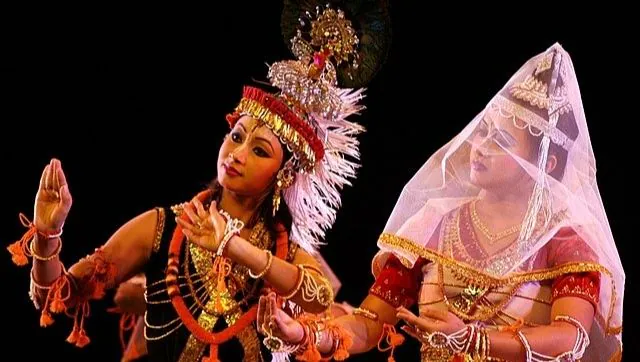The Enchanting Tapestry of India's Regional Classical Dance Forms
India, a country known for its myriad cultures, languages, and traditions, is a treasure trove of classical dance forms, each as distinct as the region it hails from. These dance traditions have deep roots in history, mythology, and spirituality, making them a profound representation of India's rich heritage. In this exploration, we embark on a captivating journey to unveil the regional diversity of classical dance forms that grace the Indian subcontinent.
Bharatanatyam - The Epitome of Southern Grace
Our journey begins in the southern state of Tamil Nadu, where Bharatanatyam takes center stage. With its roots in temple traditions, this dance form exudes elegance and precision. Dancers showcase intricate footwork, expressive hand gestures, and vibrant, elaborate costumes. Bharatanatyam is a testament to the spiritual and cultural richness of southern India, with each movement steeped in symbolic significance.
Kathak - The Art of Storytelling in the North
Heading north to the vibrant state of Uttar Pradesh, we encounter Kathak, a dance style known for its elegance and storytelling prowess. Kathak weaves narratives through intricate footwork and swift spins. Originating in the Mughal courts, it seamlessly blends Persian and Central Asian influences, resulting in a captivating fusion of cultures.
Odissi - The Poetry in Motion from Odisha
Turning our attention to the east, we discover the poetic beauty of Odissi in the state of Odisha. This dance form tells stories from Hindu mythology with fluid movements, sculptural poses, and intricate expressions. The graceful movements of Odissi resonate with the culture and spirituality of Odisha, often centering around tales of Lord Jagannath.
Kuchipudi - The Dramatic Flourish of Andhra Pradesh
In the southern state of Andhra Pradesh, Kuchipudi takes the spotlight with its dramatic flair. Originating in the village of Kuchipudi, this dance form seamlessly combines dance with theater. Dancers adorn vibrant costumes and elaborate makeup, showcasing intricate footwork while bringing stories from Hindu epics and folklore to life.
Mohiniyattam - The Enchanting Rhythms of Kerala
The picturesque landscapes of Kerala provide the backdrop for the enchanting Mohiniyattam. Named after the celestial enchantress "Mohini," this dance form is characterized by swaying movements and delicate expressions. It mirrors the serene beauty of Kerala's backwaters and culture, creating a mesmerizing experience for both dancers and viewers.
Manipuri - The Spiritual Journey of Manipur
Venturing to the northeastern state of Manipur, we encounter Manipuri dance, deeply rooted in Vaishnavism. This dance form is a spiritual and devotional art, using graceful and fluid movements to depict stories from the life of Lord Krishna. The dance resonates with the spiritual essence of Manipur's culture and traditions.
A Diverse Tapestry Woven in Harmony
Our journey through the diverse classical dance forms of India reveals the country's remarkable cultural diversity. Each dance form is a reflection of its regional heritage, history, and the people who have nurtured it over centuries. Together, they form a captivating mosaic of artistic expressions that have captivated audiences both in India and around the world.
Indian classical dance showcases the nation's ability to preserve its traditions while evolving and assimilating new influences. These dance forms serve as a reminder that amidst regional diversity, there exists a common thread of creativity, spirituality, and storytelling that binds the soul of India. Whether you're enchanted by the grace of Bharatanatyam, the elegance of Kathak, or the poetry of Odissi, these classical dance forms invite you to delve deeper into the cultural treasure trove of this incredible nation.
Join us at our dance event to explore the breathtaking beauty of dance, where graceful movements and rhythmic expressions come to life. Don't miss this opportunity to immerse yourself in the world of dance. For more information and tickets, visit Event Page.






Very informational and illuminating
ReplyDelete